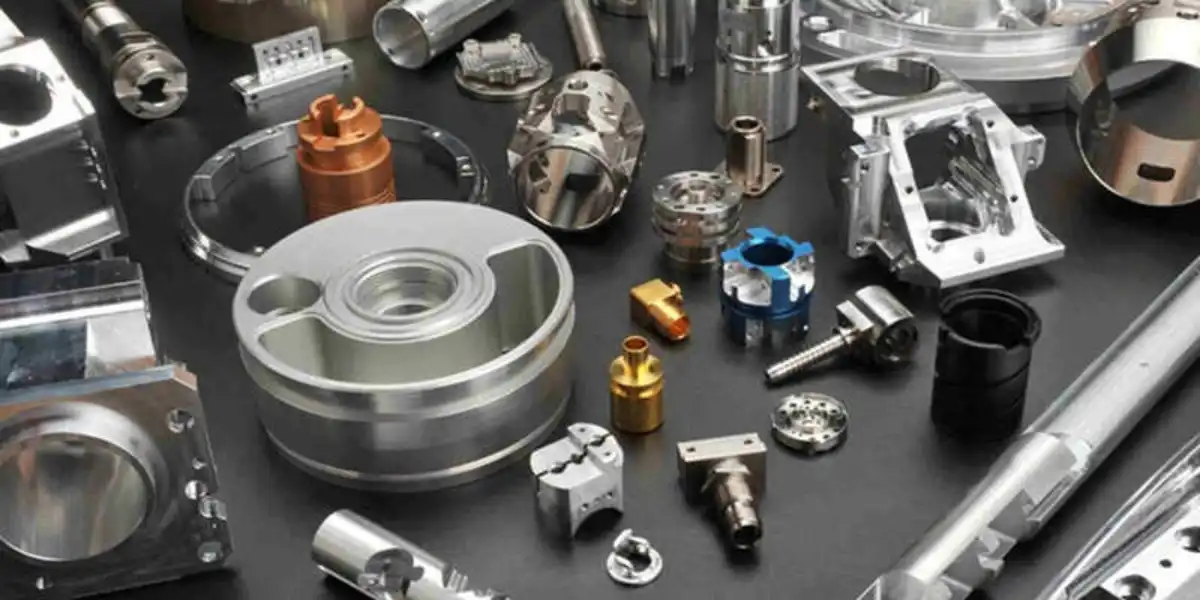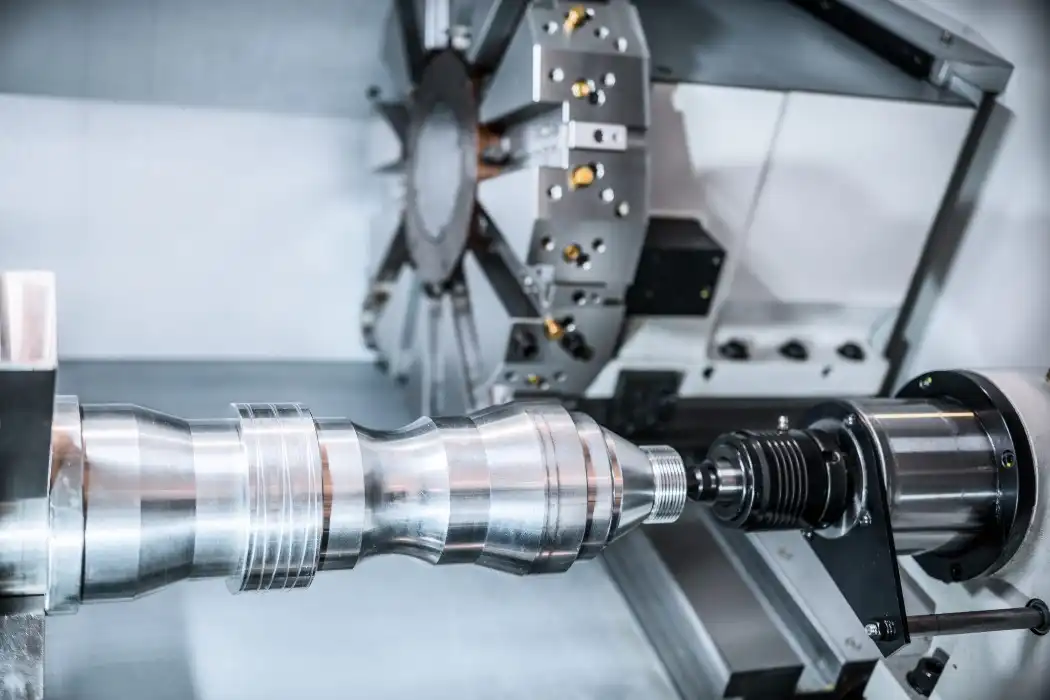Simplify Geometries for Enhanced Machinability
Minimize Complex Curves and Contours
When making parts for CNC cutting, it's best to keep the shapes as simple as possible. Complex shapes and outlines can make grinding take a lot longer and cost a lot more.Instead, opt for simpler shapes that can be easily produced using standard cutting tools. For instance, replace curved surfaces with flat or angled planes where feasible.This method not only speeds up the cutting process, but it also makes mistakes less likely and raises the quality of the part as a whole.
Utilize Standard Hole Sizes and Threads
Incorporating standard hole sizes and thread specifications in your design can greatly optimize the CNC machining process.Standard features let you use off-the-shelf cutting tools, which are easier to find and less expensive.Also, they cut down on the need for special tools, which speeds up setup and lowers the risk of mistakes. When creating threaded holes, it's best to use standard thread sizes that match taps and dies that are easy to find. This will make the process of cutting and putting the parts together easier.

Avoid Unnecessary Tight Tolerances
While precision is often crucial in CNC machining, overly tight tolerances can lead to increased production times and costs. Evaluate each feature of your design and determine where tight tolerances are genuinely necessary. For non-critical dimensions, consider relaxing tolerances to streamline the manufacturing process.This method speeds up the cutting process and cuts down on the number of finishing passes that need to be made.This speeds up production without lowering its value.
Ensure Tool Accessibility and Optimize Fixturing
Design for Minimal Setups
One of the best ways to get the most out of CNC cutting is to make parts that don't need many setups.Each time a part needs to be repositioned or re-fixtured, it introduces potential inaccuracies and increases production time. Aim to create designs that can be machined from as few orientations as possible. Consider how features are positioned relative to each other and try to group elements that can be machined in a single setup.This method not only makes things run more smoothly, but it also makes the parts themselves more accurate by cutting down on the mistakes that can build up over time when there are multiple setups.
Account for Tool Reach and Clearance
When designing parts for CNC machining, it's essential to consider the limitations of cutting tools. Access to tools can be hard because of things like deep pockets, narrow pathways, and internal features. Ensure that your design allows for sufficient tool reach and clearance to machine all required features. Where possible, avoid creating deep cavities or undercuts that may require specialized tooling or complex machine movements. Instead, consider breaking complex geometries into separate components that can be more easily machined and assembled later.

Incorporate Fixturing Features
ntegrating fixturing features directly into your part design can greatly enhance machining efficiency and accuracy.You could wish to add holes, tabs, or reference surfaces that will keep the item in place while it is being machined.These features have the potential to streamline fixturing, cut down on setup times, and increase component uniformity from one run of manufacturing to the next.Additionally, think about how your part will be held during different machining operations and design accordingly to minimize the need for custom fixturing solutions.
Optimize Material Usage and Reduce Waste
Design for Near-Net Shape
Optimizing material usage begins with designing parts that are as close to their final shape as possible before machining. The near-net shape design method reduces the amount of material removal required by the CNC process. Consider the starting stock size and shape when designing your part, and try to align features with the stock geometry. For instance, if using bar stock, design cylindrical features to align with the stock's axis.Cutting down on machining time and tool wear is only one of the many benefits of this approach to waste reduction.
Incorporate Draft Angles and Fillets
Adding draft angles and fillets to your design can significantly improve machinability and reduce material waste in CNC machining.To make tool access simpler and to protect thin, delicate pieces from breaking during machining, draft angles are used. Fillets, on the other hand, eliminate sharp internal corners that are difficult to machine and prone to stress concentration.With these additions, you may cut with bigger, more efficient tools and with fewer finishing passes. Machining times are reduced and surface finishes are enhanced as a consequence.
Consider Part Orientation for Optimal Material Removal
How much material is used and how efficient the machining is may be greatly affected by the orientation of your product.Analyze your design to determine the most advantageous orientation that minimizes the volume of material to be removed. This might involve rotating the part or repositioning features to align with the stock material's shape.Also, consider about how the part's orientation affects how coolant flows and how chips are removed during milling.Correct alignment may make cutting more efficient, tools last longer, and surfaces look better.

Conclusion
Using these design optimization guidelines for CNC machined parts may make a big difference in how quickly and well they are made. You may make designs that are simpler to machine and cheaper to make by simplifying shapes, making sure tools are easy to reach, and using materials in the best way possible.Remember that successful CNC machining is a balance between design intent and manufacturing practicality.You may make parts that fully use the power of CNC technology while keeping production problems and costs to a minimum by thinking about these things early in the design process.
CNC Machining Design Support from China's Leading Factory | BOEN
China's leading CNC machining innovator is BOEN Prototype.Our advanced CNC technology, coupled with expert design support, ensures optimal results for your prototypes and low-volume production needs.Plastics and metals are only two of the many materials in which we excel, and we provide a variety of surface treatments to cater to the needs of different sectorsWe can offer custom answers to tough design problems because our team has a lot of experience in the medical, aircraft, automobile, and consumer electronics industries.Experience the BOEN difference in precision, quality, and efficiency. Contact us at contact@boenrapid.com to elevate your next CNC machining project.
References
1. Smith, J. (2022). Advanced CNC Machining Techniques for Optimized Part Design. Journal of Manufacturing Engineering, 45(3), 112-128.
2. Johnson, A., & Lee, S. (2021). Design for Manufacturability in CNC Machining: A Comprehensive Guide. International Journal of Production Research, 59(8), 2345-2360.
3. Brown, R. (2023). Material Optimization Strategies in CNC Machining. Advanced Materials Processing, 181(4), 78-85.
4. Garcia, M., & Taylor, P. (2022). Tool Path Optimization for Complex CNC Machined Parts. Journal of Mechanical Design, 144(6), 061401.
5. Wilson, K. (2021). Enhancing CNC Machining Efficiency Through Innovative Fixturing Methods. Manufacturing Technology, 70(2), 589-604.
6. Chen, L., & Roberts, T. (2023). The Impact of Design Simplification on CNC Machining Productivity. International Journal of Advanced Manufacturing Technology, 115(5), 1623-1638.





